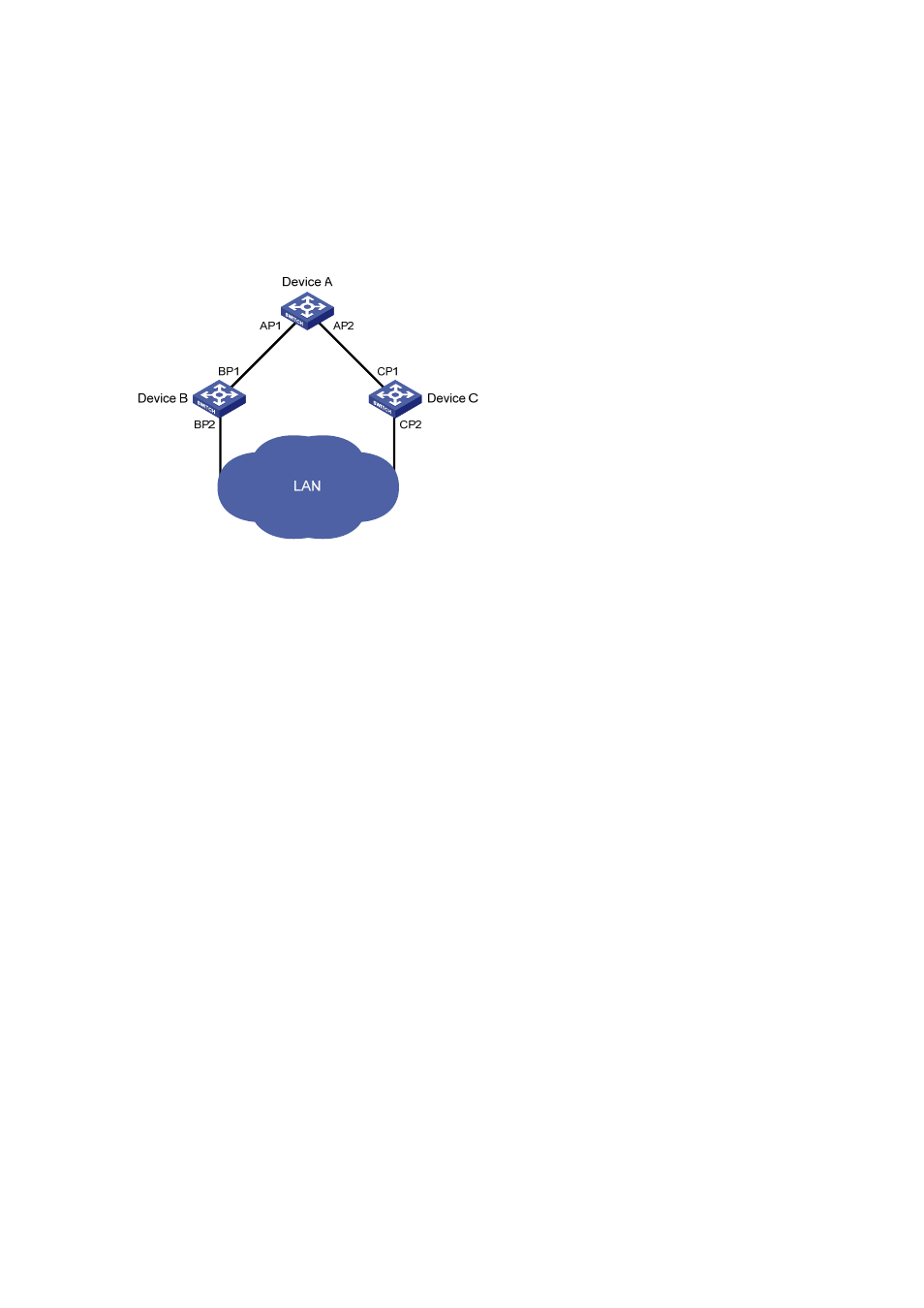Path cost, How stp works – H3C Technologies H3C S7500E Series Switches User Manual
Page 155

13-3
If Device A forwards BPDUs to Device B through AP1, the designated bridge for Device B is
Device A, and the designated port of Device B is port AP1 on Device A.
Two devices are connected to the LAN: Device B and Device C. If Device B forwards BPDUs to
the LAN, the designated bridge for the LAN is Device B, and the designated port for the LAN is the
port BP2 on Device B.
Figure 13-1
A schematic diagram of designated bridges and designated ports
Path cost
Path cost is a reference value used for link selection in STP. By calculating path costs, STP selects
relatively robust links and blocks redundant links, and finally prunes the network into a loop-free tree.
How STP works
The devices on a network exchange BPDUs to identify the network topology. Configuration BPDUs
contain sufficient information for the network devices to complete spanning tree calculation. Important
fields in a configuration BPDU include:
Root bridge ID: consisting of the priority and MAC address of the root bridge.
Root path cost: the cost of the path to the root bridge denoted by the root identifier from the
transmitting bridge.
Designated bridge ID: consisting of the priority and MAC address of the designated bridge.
Designated port ID: designated port priority plus port name.
Message age: age of the configuration BPDU while it propagates in the network.
Max age: maximum age of the configuration BPDU.
Hello time: configuration BPDU transmission interval.
Forward delay: the delay used by STP bridges to transit the state of the root and designated ports
to forwarding.